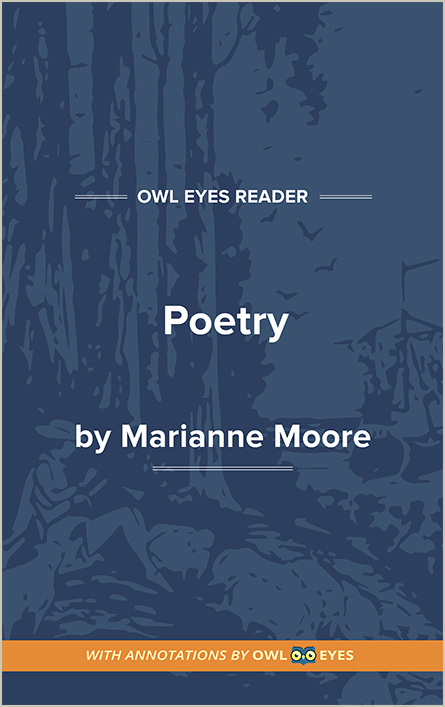Analysis Pages
Literary Devices in Poetry
Clean, Concrete Images: Moore introduces a list of descriptive animal imagery, emphasizing that these “phenomena” can still evoke images and weight, even without the typically thought-of poetic language to describe them. With just the base, “raw” materials, Moore exhibits her argument that poetry should focus on producing the “genuine.”
The power of descriptive language: The poem claims that by using “raw” language, the poet possesses an ability to create genuine emotions or reactions from the reader. By focusing on language and form, the poet can conjure images so vivid they can nearly be felt or seen by the readers themselves. This sensory representation is what Moore argues is the real appeal of poetry, rather than any intellectual analysis of it.
Verse Form: In this version of “Poetry” there are five stanzas, each consisting of six lines which follow a syllable-count sequence of 19, 22, 11, 5, 8, and 13. Moore used syllabic verse structures in many of her poems.
Literary Devices Examples in Poetry:
Poetry
🔒"dragged..." See in text (Poetry)
"a tireless..." See in text (Poetry)
"all these phenomena are important..." See in text (Poetry)

